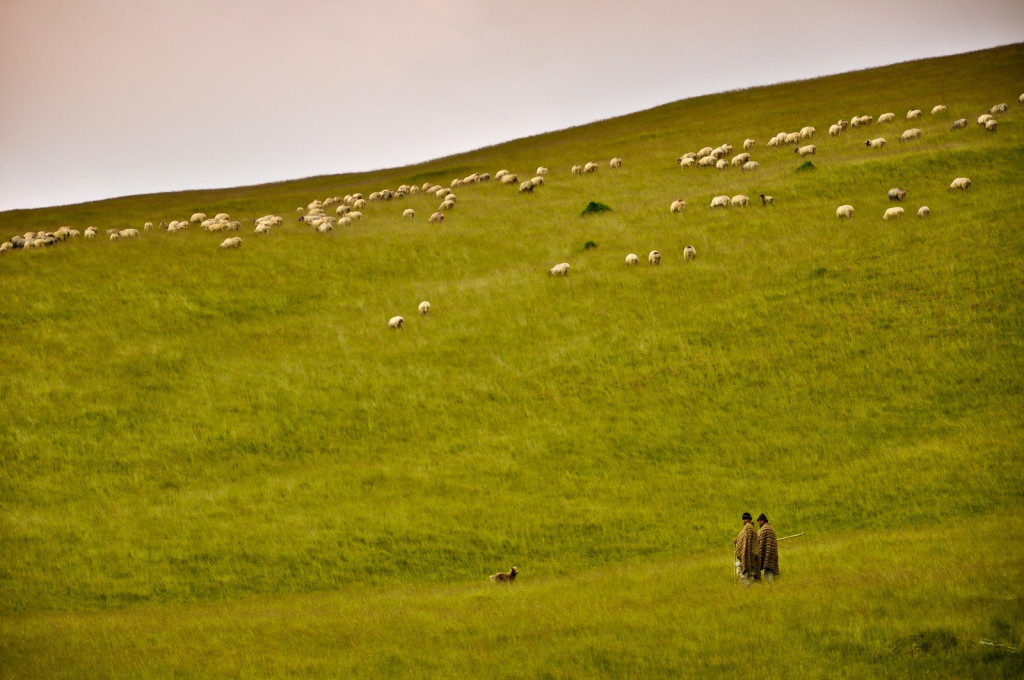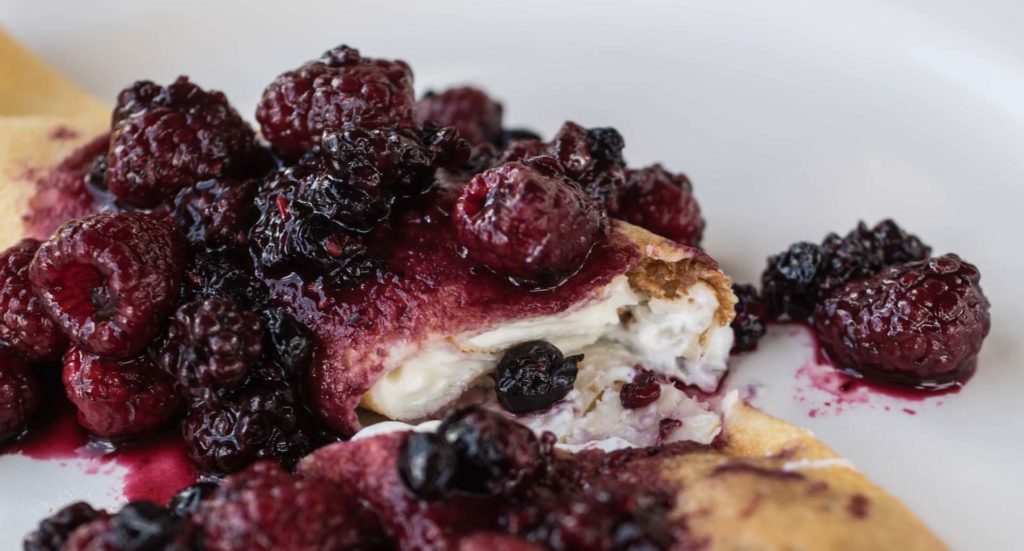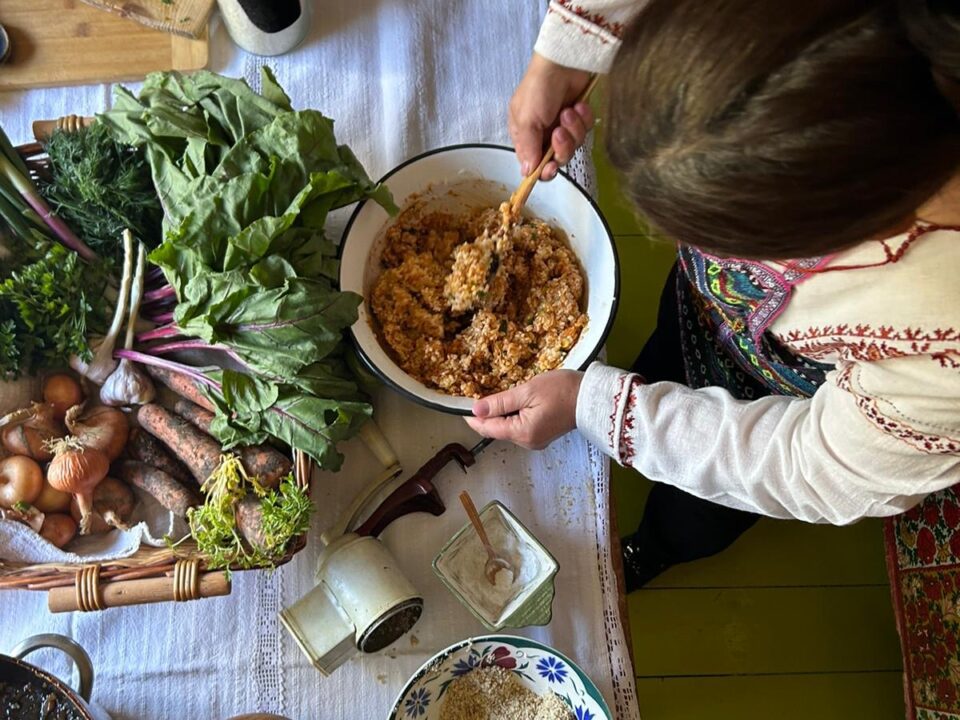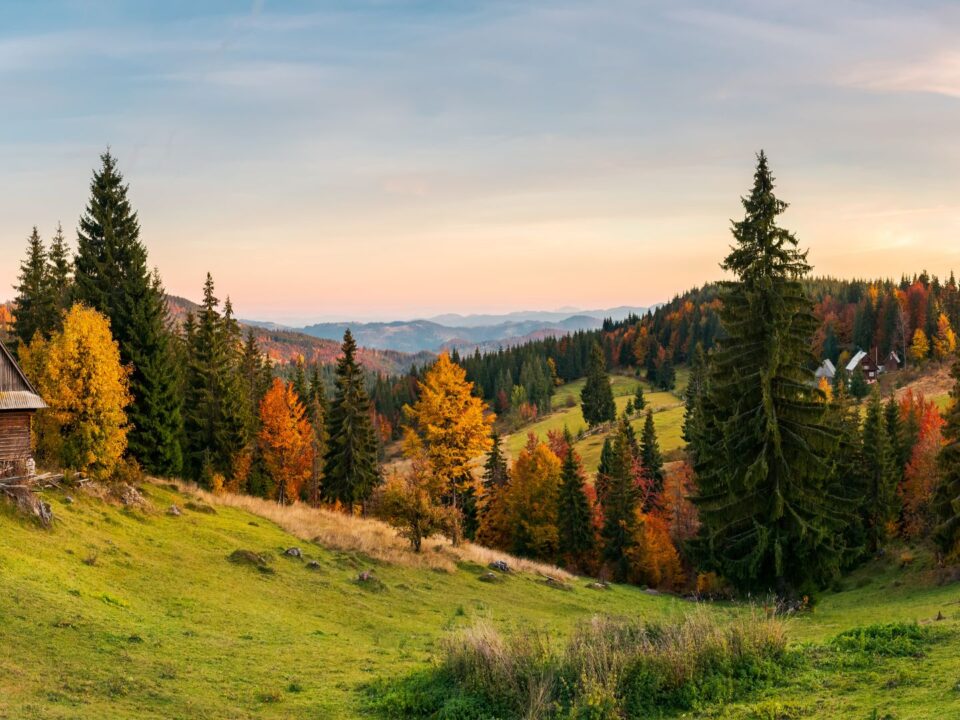
Romanian Village Museum – “Muzeul Satului”
May 4, 2018
Guild Towers
July 31, 2018Story by Warren Singh-Bartlett
Romania’s shepherds, or ciobani, are a ubiquitous sight and if you’re lucky, you’ll come across one wearing a cojoc, a yeti-esque ankle-length sheepskin coats that doubles as bedding at night. Unlike their counterparts elsewhere in Europe, Romanian shepherds are still semi-nomadic and live out in the wild, herding their flock between lowland and mountain pastures in an age-old practice known as transhumance.

Shepherds with their sheep around the hills of Transylvania
In more borderless times, the ciobani were known to wander south into the Balkans and even west into what in now the Ukraine and while many now winter in villages, they still spend summers in small huts, originally made of wood and thatching (but now often as not cobbled together from scrap metal, cardboard and plastic sheeting) known as stânăs.
While their distinctive garments are increasingly giving way to more practical gear, like tactical trousers and hiking boots, the ciobani still eke out a living by selling fresh, unpasteurised milk, yoghurt and cheese, which is usually made from sheep milk.
Using lamb rennet as a coagulant, the milk is heated and left to curdle and formed into balls, which are then sliced into pieces and kneaded together. This method of making cheese ties Romanian sheep’s milk cheese, which is generically known as caş, to the kashkaval made in the Balkans, as well as to Italian caciocavallo.
Once made, wheels of cheese are left to hang outdoors in canvas sacks and are ready to eat after a few days but can be aged for a more developed flavour.
Shepherds make a variety of different cheeses, the most common being telemea (which is similar to feta) and urda (a soft, ricotta-style cheese made from whey) but king of them all is the salty and slightly gritty brânză de burduf, a cheese made from caş, which is chopped into pieces, mixed with salt and then placed in a sheep’s stomach to age.

Cheese strudel made in Crit, Romania © Chris Caldicott
In the Carpathians, another variety of brânză is made. Instead of leaving it to age inside a stomach, it is pressed into a coaja de brad, a tube of fir tree bark. Brânzá made this way can be aged from 20 days to a couple of months or for as long as a year. The tubes are made between May and July, when the fir trees are most resinous. The bark is cut, scraped and softened in hot whey and then sewn into cylinders roughly 25cm long and about 10cm wide. The cheese is stuffed inside and the ends are sealed with bark disks. As with the Greek wine, retsina, which is aged in resinous pine barrels, the resin from the fir imparts a flavour to the cheese, which becomes increasingly spicy the longer it ages.

Bark cheese made in Romania © Oliver Speks.
Romanian cheeses vary slightly from region to region due to the fact that the overwhelming majority of cheeses are made locally, for local consumption, frequently using methods that do not meet modern standards of food production. The richness this imparts to Romania’s cheese, which are also made from milk produced by animals that have a wild, varied diet of grasses and herbs, is increasingly being recognised internationally. A few years ago, a kind of telemea called Telemea de Ibăneşti, which uses saltwater from a local salt mine in its brining process, received a coveted European PDO (Protected Designation of Origin) rating and năsal, a cheese aged in caves until it develops a bacteria-coating like Roquefort is also gaining attention. For its part, the coaj de brad-style Brânzá is one of only two Romanian food products recognised by the Slow Food movement.




